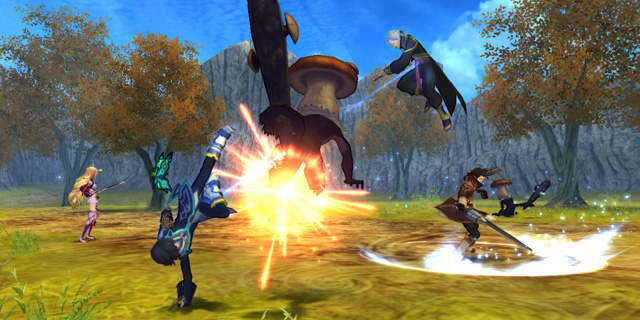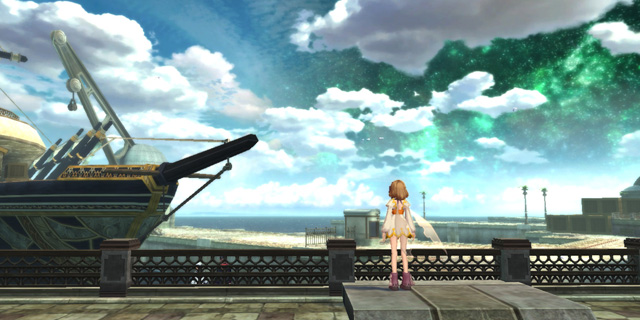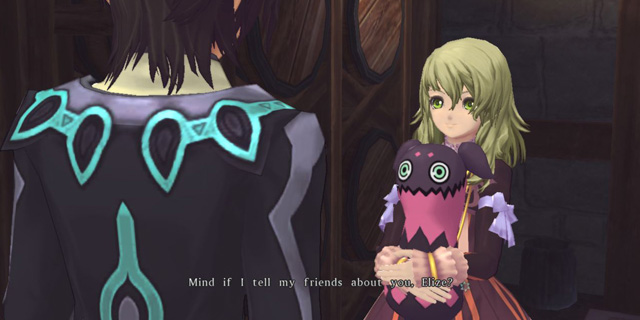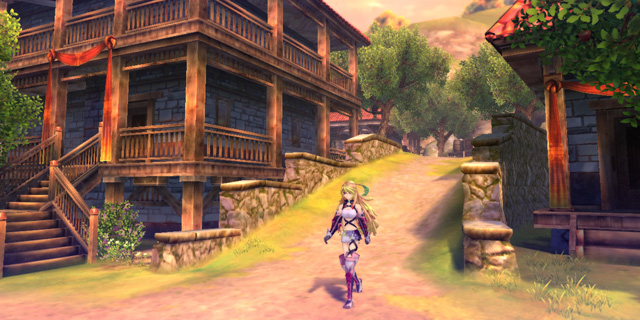
The Tales series has developed a very dedicated, core following by sticking to what it knows. Not every franchise is Final Fantasy, reinventing itself with each new installment. Just as Dragon Quest, as much as it evolves, will be forever shaped by the mechanics of its NES days, Tales has embraced its roots in the late-’90s JRPG environment.
It feels no need to move past character and plot tropes, instead reveling in them. It doesn’t feel the need to be dark or brooding, instead remaining bright and colorful. Realism’s just not a concern, as each new title brings with it a talking creature sidekick, incredibly-talented fighters that have no business being so skilled and a lexicon of made-up terms seemingly thrown in with glee.
Xillia is no different in these respects. Technically, it’s the most significant step Tales has taken this generation, as Vesperia did little to advance visuals and Graces began life as a Wii title. Even still, the aesthetics remain. You’ll find that water looks nicer, and the soft lighting effects do seem like nice additions, but Xillia doesn’t have the ambition of some of its peers. It’s comfort food for players who most loved the genre in the PS1 and PS2 eras, and as long as it’s sticking to it, there’s not much of a problem with that.

Two views, one tale
Xillia‘s split protagonists offer different slants on the same adventure. Jude is overly compassionate, always looking to help people out, and his conversations and story branches are more about rescuing people or making them feel better. Milla is largely single-minded and strategic, so her paths include more talk of divided loyalties and accomplishing missions.
Mechanically, though, the series is starting to show a desire to branch out. The combat system has seen the most significant tweaks in a while, and most of them revolve around the new link system. You can pair with one of your party members to take on enemies together, and when you do, your partner coordinates with you quite effectively. Choosing who to team up with isn’t just about preference, though. If you match up with a healer, you’ll be more likely to recover health and mana as combat bonuses. If you link with a melee fighter, you may find it easier to penetrate enemies’ defenses. If the teammate you want happens to not be in your active party, that’s okay too: you can swap them in and out on the fly.
These new dynamics are built atop Graces‘ innovations to reduce button-mashing. Not only are you rewarded with more damage for taking a second to breathe and adjust your position, but you’re also made to keep up with character link affinities. Depending on who is around and what sorts of enemies you’re facing, you’ll need to link with the right ally and cast the right arte to start devastating chains and take down tough opponents. There’s less of the guard-and-move system this time around, replaced by a focus on flanking.
Character progression has also taken an interesting turn. Replacing Graces’ tedious title-based system are Lilium Orbs, which function as skill trees. They’re shaped like hexagonal spider webs, and each level you’re given a few chances to expand your path through them to acquire adjacent abilities and boosts. This system allows you to shape the characters how you wish, but without the downsides to not specializing. It does this by its connections. You get skills by surrounding areas on all sides. If you go all the way around the hexagon with your choices, that last connection will unlock double the skills, as it encloses both sides at once. Later in the game, though, it makes sense to find a focus.

You can choose to follow one of two main characters: Jude, a medical student in the city, and Milla, a mystical, mysterious woman with ties to the spirits. The franchise is known for its focus on rewarding multiple playthroughs, and this seems like another step in that direction; the two tales are only branch apart occasionally, as the pair generally travel together, but you’ll see conversations of one and not the other much more frequently.
The localization has the usual level of charm. Inconsequential as they are, it’s fun to sometimes sit through the optional conversations, and the item and quest descriptions are worth going out of your way to read. Xillia adds yet another layer of storytelling through tiny chats that pop up automatically as you’re walking around. These add flavor to the world without bringing you to a halt to watch moving character portraits, and are very effective. In some ways, though, it makes us wish the skits were presented this way as well, and lose a bit of patience when viewing them as-is.
The voice acting is solid, too, except for in cutscenes. There’s an adherence to the original Japanese mouth movements that’s admirable, but it takes you out of the moment when there’s an inexplicable two-second break in the middle of an important line. It’s a bit hamstrung by Milla’s character, too. She is, for various plot reasons, a very formal and precise speaker, and the translation reflects that with its stilted phrasing. Even justified, though, stilted phrasing can just make you uncomfortable. When it’s free of these sorts of restrictions, often with its more subdued characters, it can be genuinely funny or heartfelt.

Multiplayer fighting
The series’ standard ability to control party members with other controllers returns, though Xillia‘s camera angles and focus on link-based cooperation make it somewhat less suited for it. Playing with two, though? That’s a bit more viable.
You can tell that Xillia was an effort to build out a deeper, slightly more mature world; it’s no coincidence that it got a rare direct sequel (already confirmed for Western release). It often fleshes out minor or even inconsequential parts of the game’s towns, creatures and cultural quirks. It’s sometimes at the expense of a more easily-understood tale, so those hoping to blast through it may experience some frustration, but if you’re willing to give it the time, it’s actively trying to make you care deeply about it.
That comes through with the general feel of things as well. From the stylized elements of menus to the well-designed packaging and limited edition materials, it evokes this feeling of appreciation that is very Japanese. It’s not a disposable thing, rather meant to be shown off, and not every release maintains this quality in the West. That said, the game’s audio sometimes comes across as nondescript. It gets across the overriding sentiment that this is a world in trouble, and it’s very well-orchestrated, but it could use just a bit of pep or quirk to keep things interesting.
If you’re not entirely committed to the sanctity of the world, you can still have fun with Xillia by collecting and attaching various items to your character. Unlike equipment, it does nothing, but hey, it’s fun? I put elf ears on Milla, because it just looked right, and I don’t think any moment in the game topped the one when I realized I could have a little girl walk around in aviators for the rest of the game.
Tales of Xillia may not be the kind of breakout title that lets the series find mainstream success, but it does exactly what it needs to make players come back who enjoyed the franchise but became frustrated with its stagnation. It’s also a great place to start for those curious about Tales, and has the world and characters to make it the first “iconic” release since Symphonia.
Pros: Well-built world, revamped combat, decreased menu tedium
Cons: Occasionally-awkward cutscenes, tropes at every turn

































